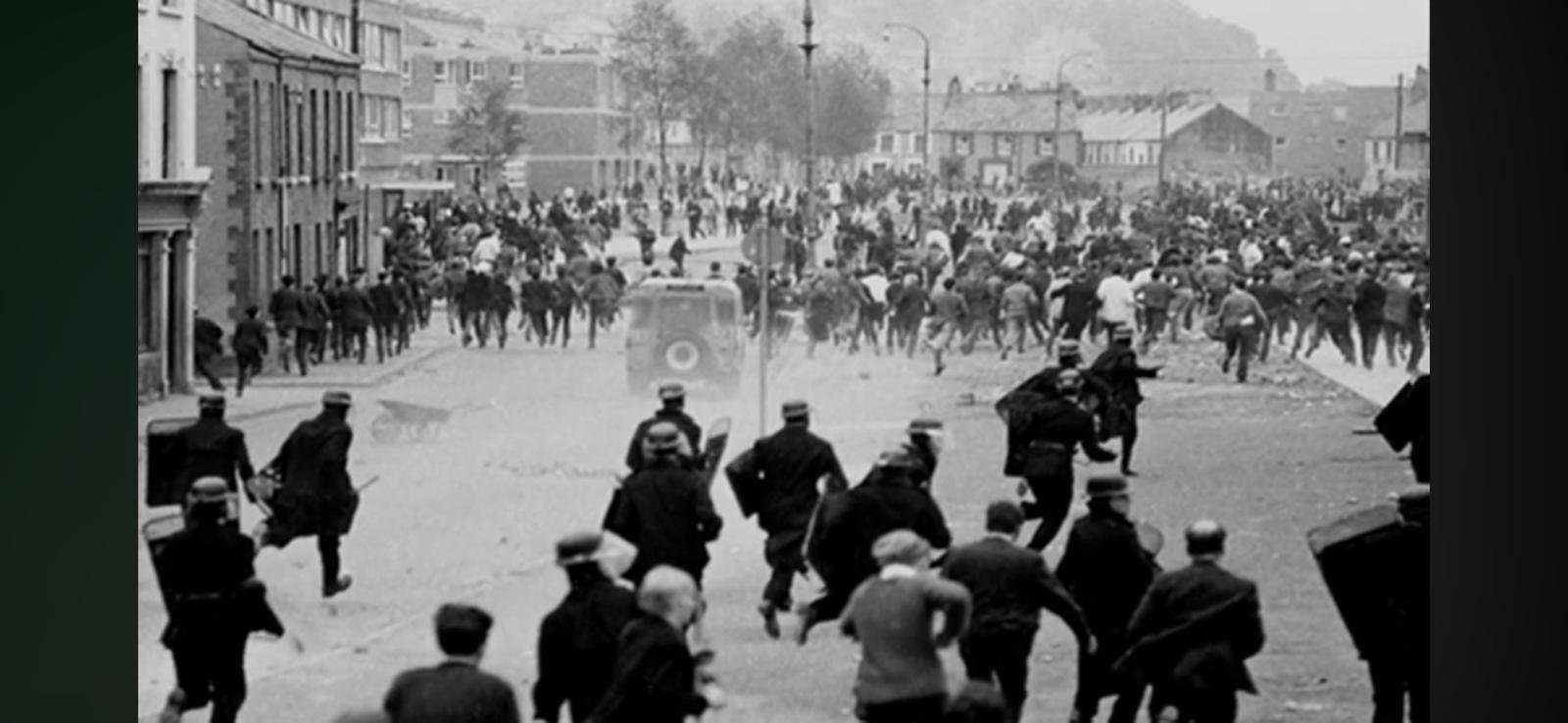Beneath the political bluster and measured studies of the Battle of the Bogside is a great human cost. This conflict profoundly changed the lives of everyone trapped in its path and turned regular homes into battlefields. Although the numbers of casualties offer some information, they only tell half of the picture; many more lives were altered by later military engagements. One of the most violent periods of urban combat in Western Europe since World War II, the conflict defined this field.
Although over 1,000 people were injured during the 1969 Battle of the Bogside, there were no fatalities directly linked to the three-day conflict. But this incident was a major impetus for the Troubles, a struggle that would take over 3,500 lives in the next years.
Eyewitness Stories from the Barricades
The area was under a tight state typified by terror and siege throughout the Battle of the Bogside. While the continual roar of marching military and yelling mobs limited inhabitants to their houses, tear gas cracked windows. Regular people—storekeepers, kids, senior citizens—found themselves suddenly thrown onto the front lines of a fight they had not chosen.
The community exhibited incredible resiliency in the face of pressure. First aid stations set by women treated injuries ranging from tear gas exposure to physical pain resulting from stones and bottles. Together, teenagers and adults maintained barriers; even young youngsters as 10 helped transmit signals between defensive locations.
The psychological effect was strong and instantaneous. Once a familiar neighborhood, what had become an alien world of smoke, trash, and danger? Though residents developed sensitivity to the sound of shattering glass, the strong smell of tear gas was a distinct and long-lasting impression.
The Death Count: Personal Stories of Loss
Although no one died specifically at the Battle of the Bogside, the larger struggle resulted in a terrible death toll. The Claudy blast took the life of an eight-year-old child on the same day as significant military operations in Derry, thereby underscoring how profoundly violence infiltrated ordinary life.
Later Bishop of Derry, Father Edward Daly described horrific images of death and injuries, vividly capturing the terrible urban combat that turned a once-quiet residential area into a battlefield. His story gave concrete military activities a human face. To be clear, the Battle of the Bogside did not include Bloody Sunday, an isolated and independent action taking place in 1972.
Daily Living Under Siege in No-Go Areas
Bogside and other no-go zone inhabitants suffered almost three years of siege-like circumstances from the placement of barriers in 1969 to their ultimate removal. Cut off from usual civic life and under continual military interference, daily activities had to change significantly. Mail delivery, trash collecting, and street maintenance—public services—became erratic or nonexistent, prompting residents to develop their own solutions.
Families with children had to deal emotionally with this solitude. Parents battled to keep their feeling of normalcy while justifying the military presence and the difficulties of seeing relatives all across the city. The continual overhead presence of helicopters accentuated the anxiety.
The Anxiety of House Searches
For many of the population, military rule came with regular house-to-house searches, a very distressing event. These searches compromised families’ privacy and dignity even if they were considered essential for security. Once havens, homes started to be possible locations of strife. Children suffered long-lasting psychological damage as they watched their fathers questioned or incarcerated.
Experience of Women: The Unspoken Deaths
Many times, the effect of the conflict on women has been disregarded. Women assumed vital responsibilities in administering improvised hospitals, distributing food, and overseeing trauma-related neighbor and kid comfort. Women filled roles typically occupied by males when many men were imprisoned, wounded, or in hiding. This weight contributed to the already great social and financial strains the war generated.
Children’s War: Navigating the Troubles
Violence was taught to children as the accepted aspect of life. They changed their behavior to minimize risk after learning to identify the sounds of military vehicles and gunshots. Many grew to have a sophisticated political understanding considerably sooner than would have been possible in quiet times.
Schooling was regularly disturbed, and instructors had to strike a balance between their academic obligations and the emotional assistance young traumatized required.
Economic devastation: Conflict’s material cost
Beyond the human cost, the fighting destroyed nearby businesses. Companies shuttered or moved, aggravating existing underprivileged areas’ economic problems and unemployment. Often without insurance, military actions and riot destruction devastated family savings.
Small enterprises were stuck between security authorities calling for cooperation and paramilitary organizations barring cooperation and faced hard decisions. Many chose to close rather than negotiate these risks.
Psychological and Medical Legacy
For many residents, extensive exposure to tear gas caused persistent respiratory problems. Affected many were psychological trauma ranging from post-traumatic stress disorder to depression to drug usage.
Operating under extreme restrictions, hospitals were overrun.
Resilience in Communities: Solidarity
The Bogside community showed amazing camaraderie among the suffering. Neighbors survived by depending on one another, forging relationships that endured far beyond the fighting. Formed during the turmoil, community organizations developed into enduring institutions offering necessary services when the state was absent.
Global Sympathy and Support: International Effects
Particularly among Irish-American populations, international media coverage of the conflict—especially pictures of British troops firing tear gas against civilians—generated sympathy elsewhere. This produced political and financial backing that shaped the direction of the Troubles. Globally, civil rights groups also drew comparisons with previous movements, therefore exerting pressure for political remedies.
Memorializing Trauma: Community Remembrance
Oral narratives, memorials, and anniversary celebrations help to honor the war. Peace fences and memorial gardens still define the terrain and guarantee that the human cost is not overlooked.
Lessons for Next Generations
The Battle of the Bogside emphasizes the terrible results of governmental neglect as well as the pressing need for peaceful dispute settlement. Lessons in compassion and unity still applicable today can be learned from the resiliency displayed by under-pre
